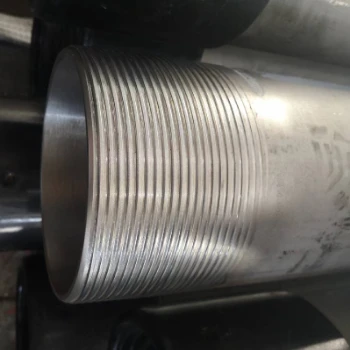casing threads and couplings
Understanding Casing Threads and Couplings in Oil and Gas Operations
In the oil and gas industry, the extraction of hydrocarbons from beneath the earth's surface involves various intricate processes and technologies. One critical component of this operation is the use of casing threads and couplings, which are essential for ensuring the structural integrity, safety, and efficiency of drilling activities. This article provides an overview of casing threads and couplings, their importance, types, and applications in the oilfield.
What is Casing?
Casing is a series of steel pipes that are inserted into an oil or gas well to provide support for the wellbore, prevent collapse, and isolate hydrocarbon zones from surrounding rock formations. The casing also protects groundwater and minimizes environmental impact. It typically comes in sections, which are connected to each other using couplings.
Casing Threads
Casing threads are the helical grooves cut into the ends of casing pipes. These threads are critical as they enable the pipes to be connected securely, ensuring that the casing remains intact during drilling and production operations. The design of casing threads varies based on the type of casing and the specific requirements of the well.
There are several types of casing threads, including
1. Round Threads - Historically the most common type, round threads provide a robust connection but require precise make-up torque to achieve a leak-proof seal.
2. Square Threads - These threads have a flatter shape and can provide better sealing under high pressure; however, they are more susceptible to wear.
3. API Threads - The American Petroleum Institute (API) has set standards for casing threads, with API 5B being the primary specification. API threads are widely used for oilfield applications, providing consistent performance and compatibility across different manufacturers.
4. Premium Threads - Designed for high-performance applications, premium threads offer enhanced sealing capabilities and are often utilized in challenging environments, such as deepwater drilling or high-pressure wells.
Couplings
casing threads and couplings

Couplings are short pieces of pipe with threads on both ends, used to connect individual casing sections
. The choice of coupling can significantly impact the overall performance of the casing system, as they bear the brunt of loads and environmental stresses.There are primarily two types of couplings
1. Standard Couplings - Often used for regular operations, standard couplings provide a reliable connection but may not offer the enhanced sealing features required for high-stress applications.
2. Specialized Couplings - These include various designs aimed at maximizing strength and sealing capabilities. Examples include integral couplings, which combine the pipe and coupling into a single unit, reducing potential leak points.
Importance of Casing Threads and Couplings
The importance of casing threads and couplings cannot be overstated. Their role in ensuring the safety and efficiency of drilling operations is paramount
- Structural Integrity Properly designed and executed casing threads and couplings ensure that the wellbore remains stable, preventing collapse and potential accidents.
- Pressure Management High-pressure wells require dependable sealing solutions. Advanced thread and coupling designs contribute to maintaining pressure integrity, safeguarding both personnel and the environment.
- Minimized Environmental Impact Effective casing systems help prevent oil and gas leaks that could contaminate groundwater or surface ecology, fulfilling regulatory requirements and protecting natural resources.
- Operational Efficiency The compatibility and reliability of casing threads and couplings directly affect the speed of operations, reducing downtime and associated costs during drilling and production phases.
Conclusion
Casing threads and couplings are fundamental elements of successful oil and gas operations. Their design and selection must consider various factors, including well conditions, pressure requirements, and environmental protections. With advancements in technology, the industry continues to innovate in casing thread and coupling designs, driving improvements in safety, efficiency, and environmental responsibility. As we seek to meet global energy demands, the significance of these components will only grow in importance, ensuring that the oil and gas industry operates sustainably and effectively.
-
Tubing Crossover - API Compatible, Custom Sizes, In StockNewsNov.10,2025
-
Tubing Coupling | High-Strength, Leak-Proof Steel CouplingsNewsNov.10,2025
-
Wholesale API Threading Casing Coupling | API 5CT, Fast ShipNewsNov.10,2025
-
Pup Joint Supplier | API Certified, Custom, Quick ShipNewsNov.10,2025
-
Pup Joint Manufacturers | Precision Machined, Fast DeliveryNewsNov.10,2025
-
Tubing Coupling | Precision Steel, Leak-Proof, Fast DeliveryNewsNov.03,2025







